Ring Styles
Posted: March 2023
Silver Rings
All Paula Wilkinson silver rings have shanks made from sterling silver. Sterling silver is the standard silver that is used in jewellery making and is, in fact 92.5% silver mixed with 7.5% other metals to make it harder. Pure silver, or fine silver, would be far too soft for making jewellery that will last, and is only used in parts of the jewellery making such as stone settings where the metal needs to be more malleable.
Ring Shanks
The ring shank, or band, is the circular part of the ring that fits around your finger. Without this, it wouldn’t be a ring at all. Rings start out as a straight piece of metal, which is cut to size, then formed over a ring mandrel (a tapered steel pole, also called a triblet) and the ends soldered together (or soldered to the back of a stone setting) to make the ring. I make 4 styles of ring shank which vary in width and thicknesses. These are flat, round, oval and D-shaped rings.
Flat Ring Shanks
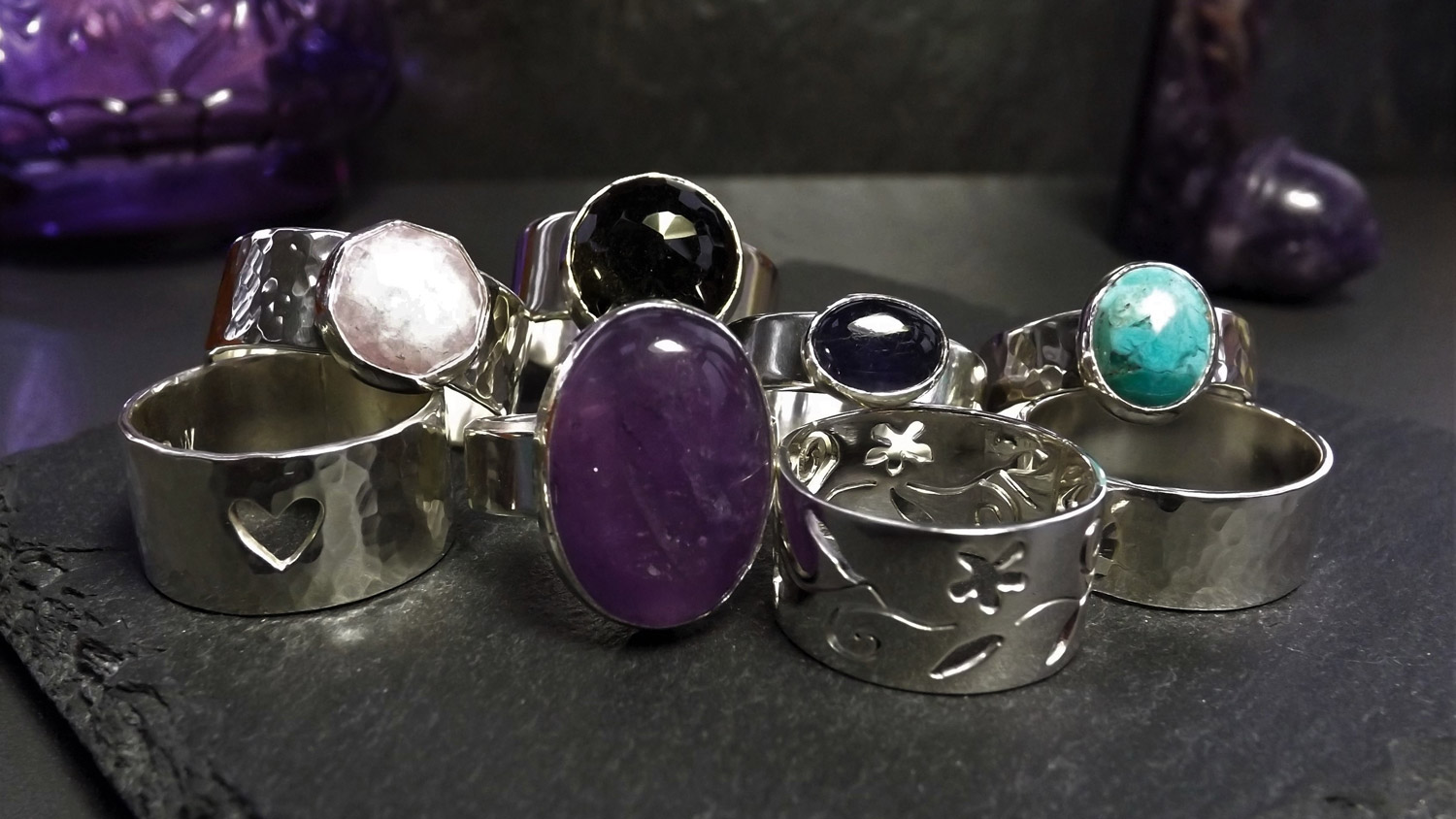
All the rings shown in this image have flat shanks

Flat ring shanks are made from a flat sheet of sterling silver, usually 1mm thickness, sometimes thicker. Flat shanks are great for wider rings and those with a cut out design.
Round Ring Shanks

Round ring shanks are made from round sterling silver wire. This is usually 1.5-2.5mm in diameter. Round wire is often used in stacking rings, where you mix and match several rings together on the same finger.
Oval Ring Shanks
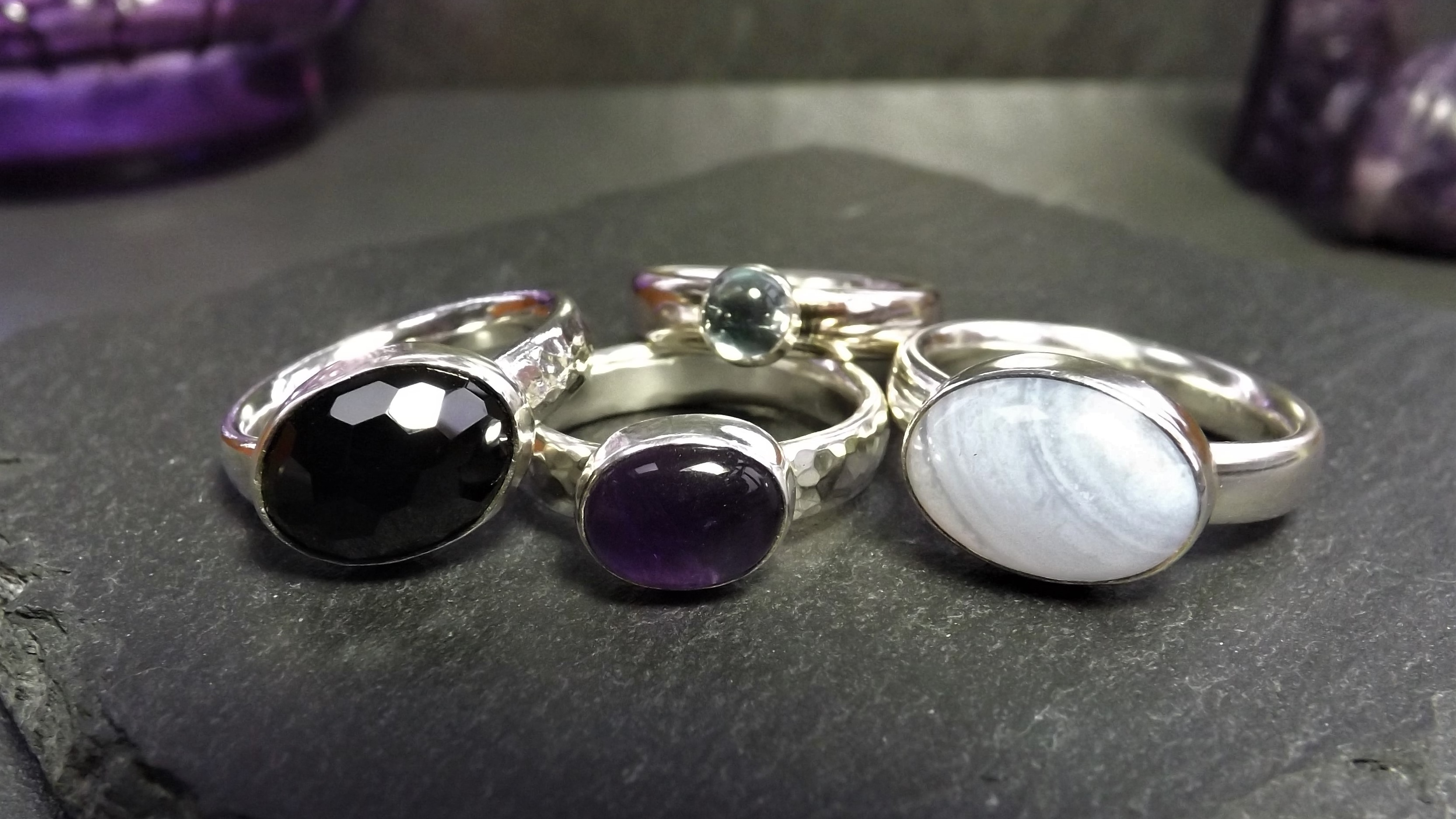
Rings with oval shanks

Oval ring shanks are made from oval sterling silver wire, usually 5mm wide and 2.5mm thick. This creates a lovely chunky ring and is great with large stone settings.
D-shaped Ring Shanks
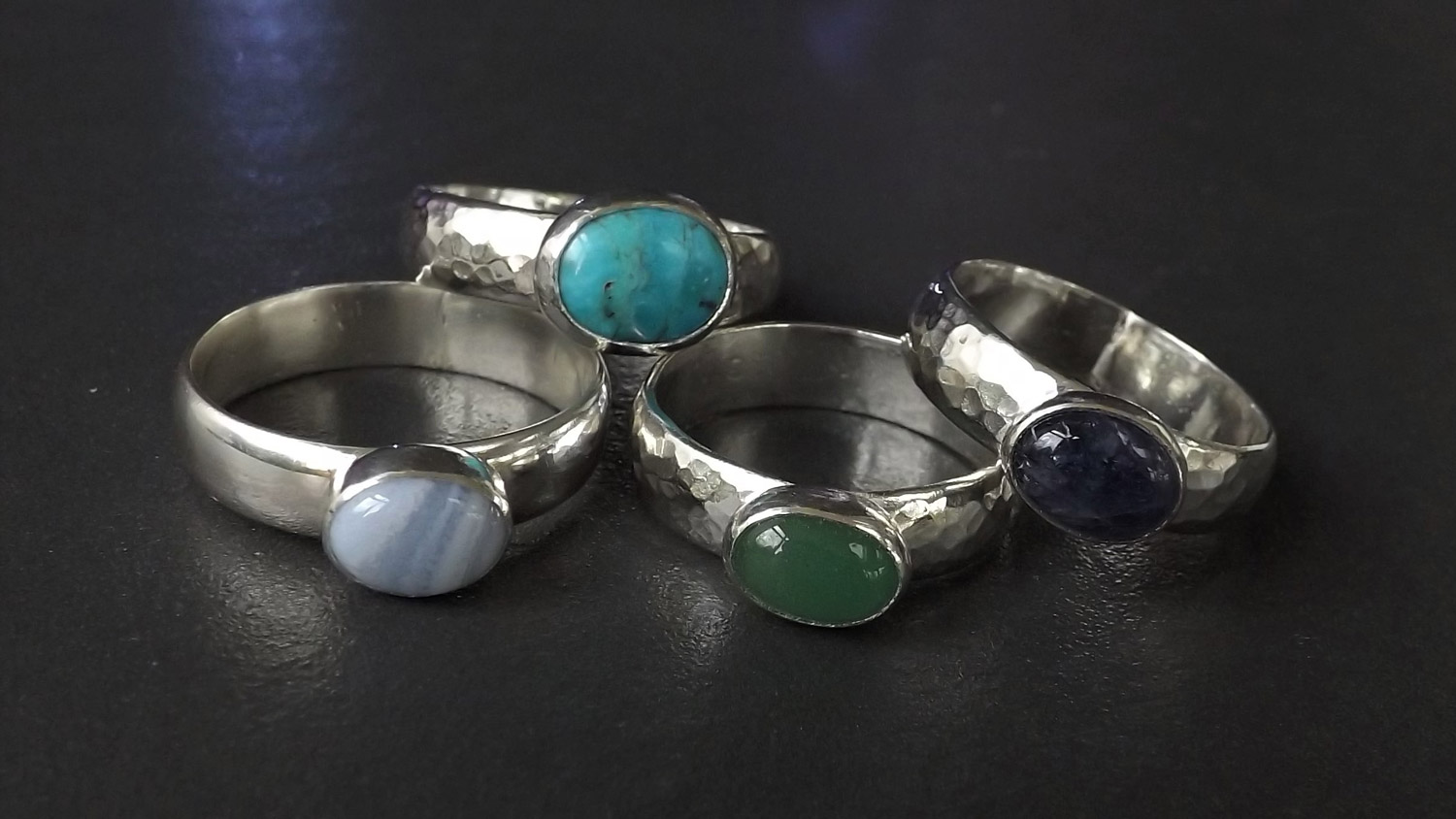
Rings with D-shaped shanks

D-shaped ring shanks are made from D-shaped sterling silver wire, usually 5mm wide and 1.25mm at the widest thickness. Wedding rings are often made from D-shaped wire. Great if you prefer a less-chunky ring.
Ring Decoration
There are various methods for adding decoration to a silver ring, and here are examples.
- Hammered Rings - Texture is applied to the ring shank using a rounded jewellers hammer. This gives the piece a very traditional look. The beautiful beaten finish on the hammered surface of the silver catches the light from different angles.
- Cut Out Design Rings - To make a ring with a cut out design, the design is hand drawn onto a strip of silver and cut out using a jewellers piercing saw before forming the piece into a ring. Similar to a hack saw, the jewellers saw has a frame where the blade attaches at the top and bottom. The blades are extremely thin, approx. 1mm wide, for creating intricate designs. Tiny holes are drilled in the silver so that the blade can be threaded through to start cutting. Once the design has been cut out, the rough edges are sanded until smooth.
- Etched Rings - To create an etched design on a ring, the design is hand painted onto the silver in varnish. The silver is then placed into etching solution, and the acid burns into the exposed parts of the design, while the varnish resists the acid and protects the surface below. Once etched, the silver is cleaned up and a patina added which darkens the etched areas, so that the raised areas are highlighted when polished.
- Gemstone Rings - There are so many beautiful gemstones to choose from. They are are wonderful way to add colour and an extra dimension to jewellery. There are also many different ways to set stones, however bezel settings are my preferred style for Paula Wilkinson Jewellery. A bezel setting is formed using a thin strip of fine silver, which is wrapped around the stone to create a perfect fit. The bezel’s ends are soldered together to create the wall for around the stone, and then this is soldered to a sheet of sterling silver. The shape is then cut from the sheet of silver, so that you have a cup the perfect size to fit the stone in. It is filed and sanded until smooth. The bezel setting is then soldered to a ring shank. Once the ring has been cleaned up and polished, the stone is placed in its setting and the silver pushed over to hold it in place and finished off by burnishing.
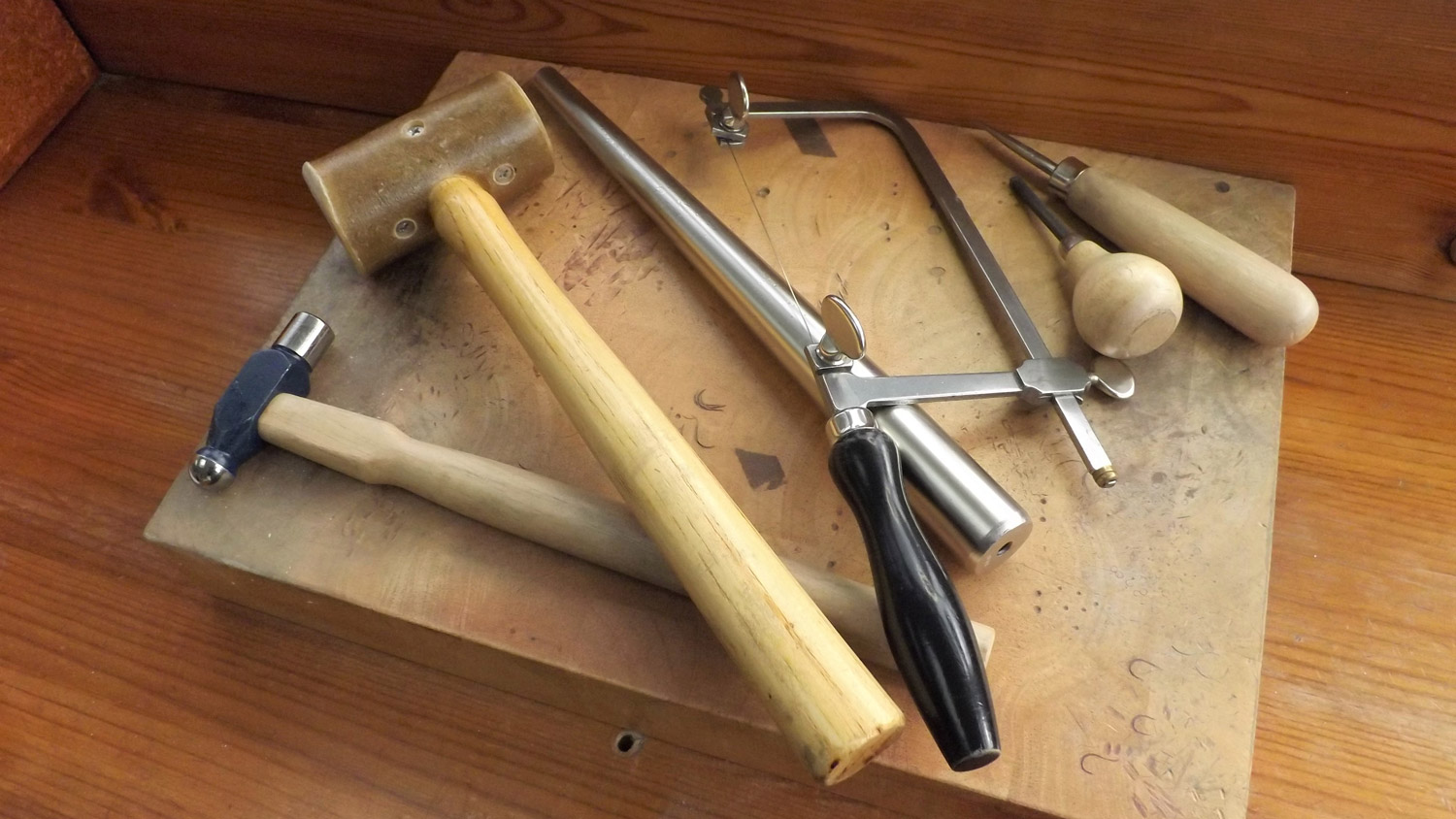
Tools: Jewellers Hammer, Rawhide Mallet, Ring Mandrel, Jewellers Saw, Bezel Pusher, Burnisher
Ring Sizing
Do you know your ring size? If not, you can pop into any high street jewellers, who will be happy to measure your fingers for you. This chart shows the circumference for popular UK ring sizes:
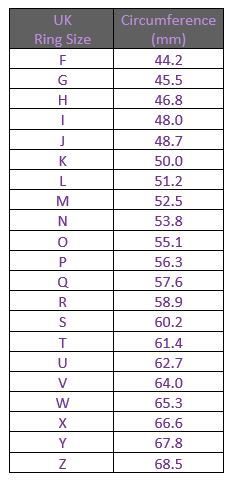
If you see a ring that you like on my website, but it is not your size, please send me a message as I may be able to make one for you, subject to availability of materials.
Contact FormI hope you have found this article interesting and useful. If you have any questions, please do contact me.
With very best wishes
Paula
Share this story:
Find me on social media
Recent posts
- March 2024
- Work In Progress
- February 2024
- Paula Wilkinson Jewellery Events 2024
- January 2024
- December 2023
- November 2023
- October 2023
- September 2023
- August 2023
- July 2023
- Introducing Customisable Necklaces
- June 2023
- May 2023
- April 2023
- Events 2023
- March 2023
- Ring Styles
- February 2023
- Happy New Year 2023
- Highlights of 2022


 Login
Login
